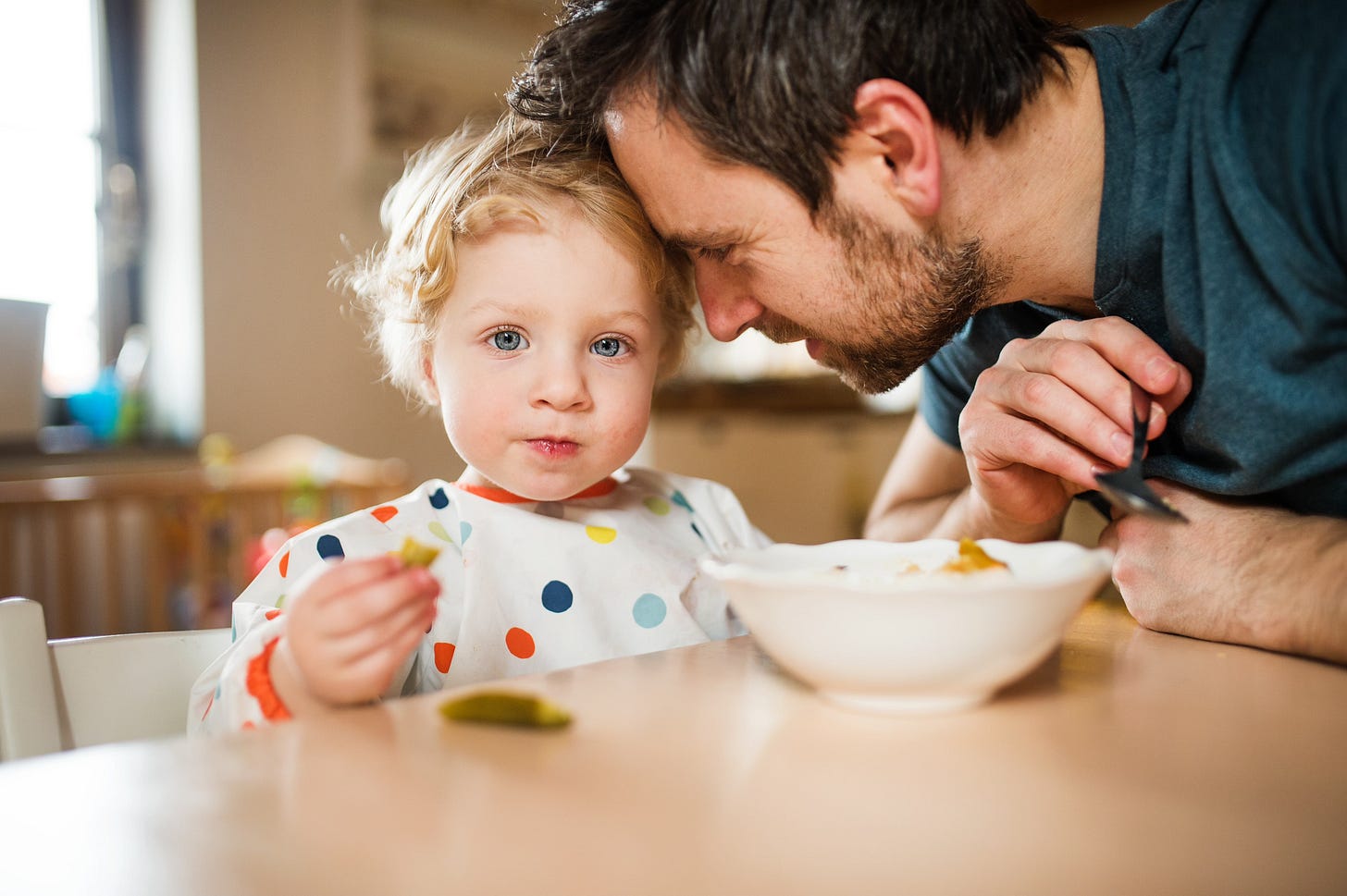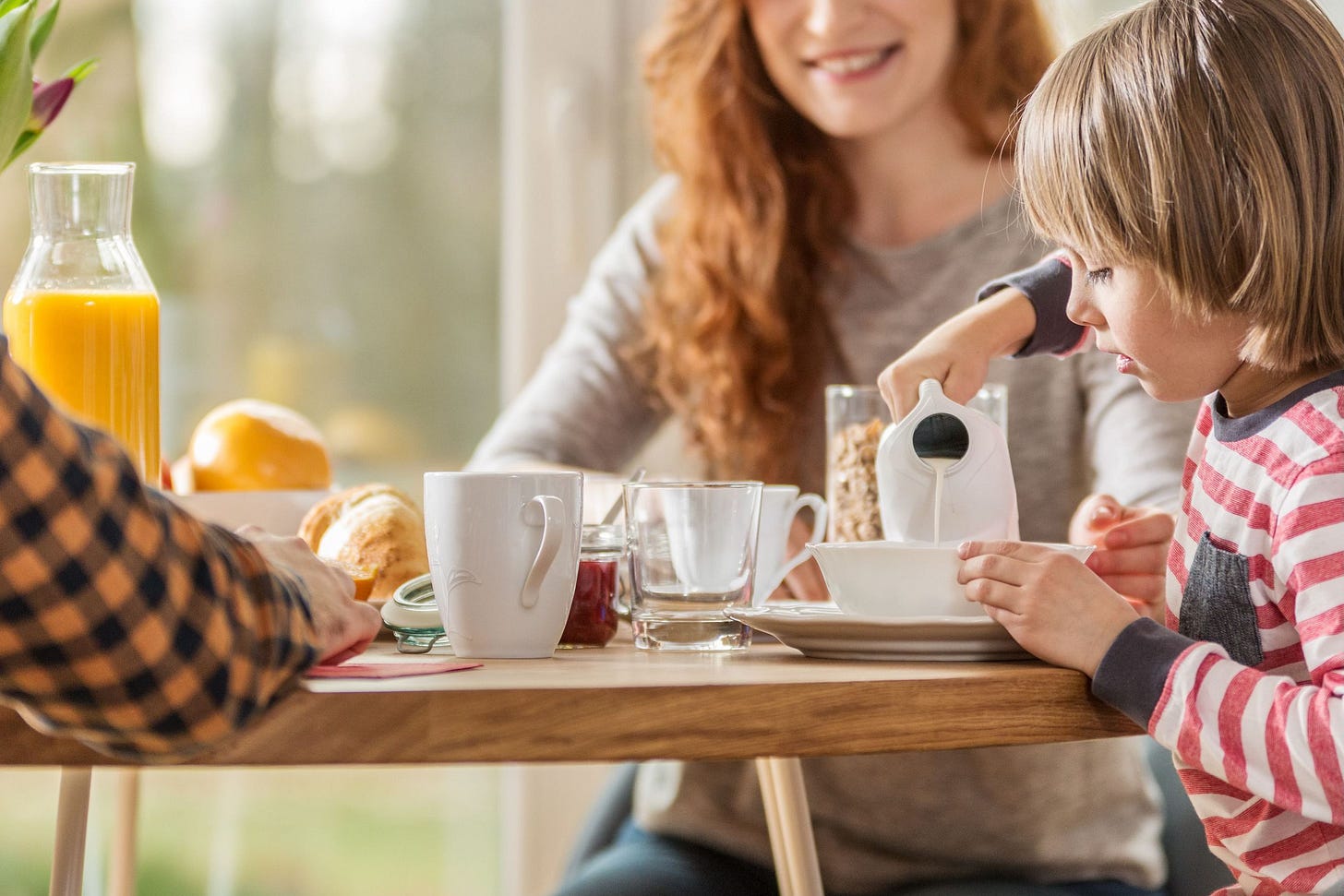What Is Taste Literacy?
The foundation of calmer, more confident feeding
A pediatrician-chef’s guided approach to feeding – helping you move from frustration to confidence at the table.
A Weeknight Table
It’s a Tuesday evening, the kind of night that already feels full before dinner even begins. Work emails linger in the back of your mind, your toddler is sticky from daycare snacks, and a backpack lies open on the floor, half-finished art projects spilling out.
You thought dinner would be easier by now – maybe even enjoyable. After all, your child started strong. Baby-led weaning went smoothly; they reached for whatever you placed on their tray, and you felt proud watching them gum and taste with curiosity. But somewhere between then and now, something shifted.
Tonight, when you place a plate on the table, you can already sense the resistance. The peas are pushed aside. The chicken is untouched. The meal you hoped would nourish feels like another negotiation, another moment of wondering: Will they eat it? Should I give them something else, so they don’t go to bed hungry?
The joy you once felt in feeding has become a chore. And the question circles back again: What am I missing?
The Literacy Lens
Here’s the piece most people never explain: feeding isn’t just about what’s on the plate. It’s about guiding your child’s natural developmental skills, ones that unfold step by step, just like learning to walk or to read.
Think about how children learn to read. They don’t start with a chapter book. They learn letters first, then the sounds each letter makes, then small words, then sentences. Each step is scaffolded, supported, and layered until reading becomes natural.
Taste literacy works the same way. Children don’t become confident eaters by being told to “take one bite” or by being exposed to a food twelve times. They grow secure when each experience builds gently on the last, when they feel safe enough to be curious.
Just as reading literacy teaches a child to connect symbols with meaning, taste literacy teaches a child to connect flavor with familiarity and safety. It’s how children learn to connect flavor with familiarity and trust – through small, supported experiences that make eating feel calm and shared.
Taste literacy offers the framework for guiding that process. It’s the developmental guide that turns repeated frustration into calm, confident progress.
Taste literacy is how children learn what food means – not only how it tastes.
When you start viewing food this way, mealtime shifts from a series of standoffs to a space for learning and connection.
Why Taste Literacy Matters
If feeding your child feels harder than it should, you are not alone. Most parents want the very best for their children. You shop with care, try new recipes, read the books, scroll the advice, and listen to friends, pediatricians, and your own parents. And still, mealtimes often feel like a cycle of effort without reward.
Part of the challenge is the swirl of mixed messages. One expert says, “Just keep offering it.” Another insists on the “division of responsibility.” A well-meaning grandparent reassures you, “Don’t worry, it’s just a phase.”
Meanwhile, dinner comes back untouched, snacks fill the gaps, and you find yourself cooking more than one meal just to get through the evening. It feels less like connection and more like survival.
Feeding does move through phases, and while short-term tactics can help, they rarely address the heart of the challenge. When we start to see feeding as a natural developmental process, one that can be guided and scaffolded, the frustration begins to soften.
When feeding feels like a developmental rhythm, you move from managing what’s eaten to guiding how your child’s curiosity grows.
Children aren’t born knowing how to explore flavor or manage texture. That’s where pediatric culinary medicine begins, in understanding the developmental steps that make flavor feel safe and familiar. Children learn it over time. And like learning to read, they need more than repeated exposure; they need context and gentle support. Each new experience with food should feel safe, supported, and layered in a way that makes sense to them. That’s what builds confidence.
This shift matters because:
Developmentally: Tasting is a milestone. Just as children practice sounds before speaking in sentences, they need practice with flavors and textures before they feel confident eating them.
Emotionally: Children who feel calm around food are less likely to tense up, melt down, or refuse. A calm tone at the table builds peace for both of you.
Practically: Children with strong taste literacy skills try more foods and carry that confidence into school years, social gatherings, and eventually adulthood.
When feeding feels like a developmental rhythm, you move from managing what’s eaten to guiding how your child’s curiosity grows. When you begin to see feeding through the lens of taste literacy, your role changes. You are your child’s best and safest guide, offering the calm presence and steady structure that helps curiosity grow.
Taste literacy offers a framework that transforms repeated frustration into calm, confident progress.
Defining Taste Literacy
Taste literacy is the developmental process by which children learn to understand, accept, and enjoy flavor – a skill that grows through calm, guided experiences with food. Over time, children collect small, safe experiences with food that layer into trust and exploration. It’s not about tallying exposures or winning a single bite; it’s about building the skills that make eating feel secure and enjoyable.
Just as children develop reading fluency step by step, from letters to words to sentences to stories, they build taste fluency through gentle, repeated encounters with flavor.
Each new taste prepares them for the next. It’s a process of guiding your child through new flavor experiences so they feel curious, safe, and confident with a variety of foods. In short, taste literacy is how children learn to feel secure, inquisitive, and brave with flavor – one guided experience at a time.
Here are four pillars that bring taste literacy to life.
Exposure with Context
You’ve probably heard: “Keep offering new foods. It takes 12 to 15 exposures before your child eats it.” So, you try. You keep putting peas or broccoli on the plate, and each time they’re ignored or tossed on the floor. It’s supposed to be a learning moment, but it quietly feels like a reflection of you. You wonder if stopping means you’ve failed.
Here’s the shift: exposure with context is different. It’s not about showing your child the same food again; it’s about how and when they experience it.
Take apples. One day, your child crunches into a slice straight from the fridge, cool and crisp. Another morning, those same apples show up warm and soft, stirred into oatmeal with a sprinkle of cinnamon. Later, roasted apple wedges appear at dinner, golden and tender beside chicken.
It’s still apple, but each small change adds another safe memory. That gentle variety, within the comfort of something familiar, is what builds curiosity and trust.



